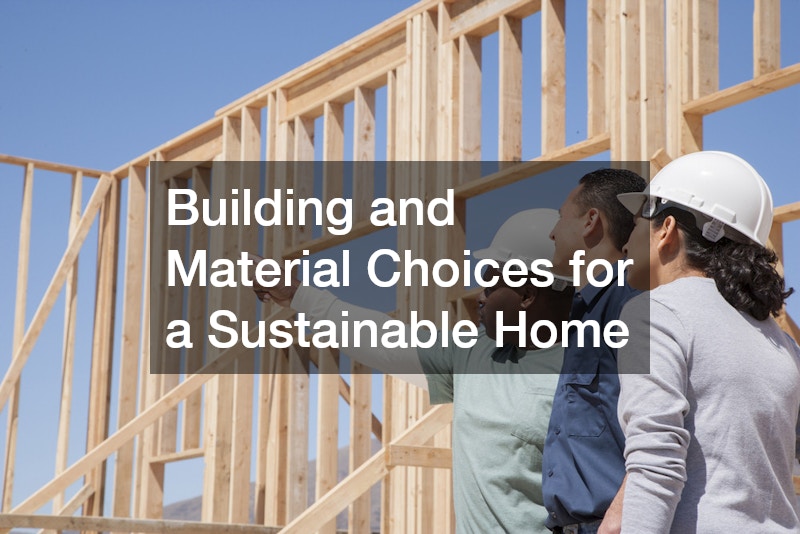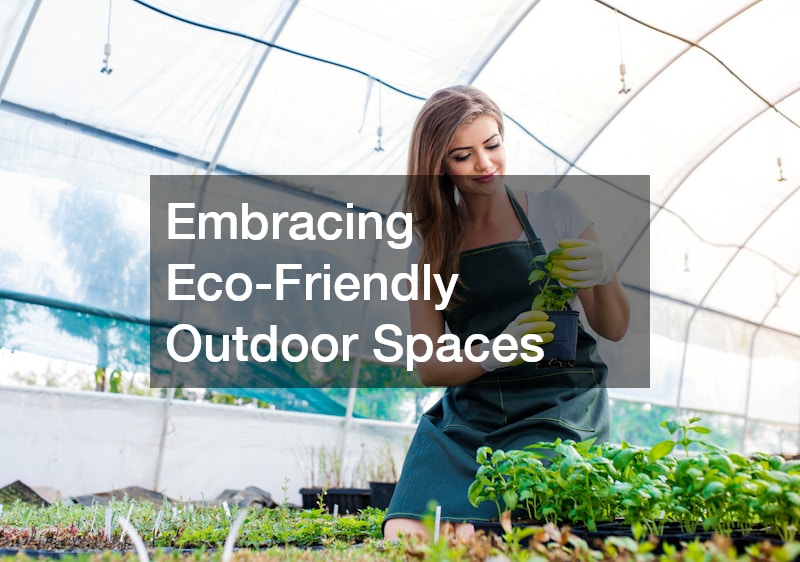As the conversation around sustainability continues to grow, more homeowners are recognizing the value of creating eco-friendly homes. Making a home eco-friendly means more than just reducing energy bills—it involves a shift toward sustainable, efficient, and health-conscious living. From energy-saving appliances to sustainable materials, small and large changes alike can have a significant impact on the environment and our day-to-day lives. Below, we’ll explore the many benefits of making your home more eco-friendly and how implementing eco-conscious practices can enhance your home’s comfort, value, and efficiency.
Financial Savings and Long-Term Value

Lower Monthly Utility Bills
One of the primary benefits of eco-friendly homes is the immediate reduction in monthly utility bills. By investing in energy-efficient systems, such as advanced heating and air conditioning, you can significantly reduce the amount of energy needed to maintain comfortable temperatures throughout the year. Modern HVAC installations are designed with sustainability in mind, using less energy while delivering the same—or better—performance as older systems. This means that while there may be an upfront cost to upgrade, the investment often pays for itself over time through reduced energy expenses.
Increased Home Value
As the demand for sustainable housing grows, homes that feature eco-friendly elements tend to attract higher market values. Prospective buyers today are more educated on the benefits of eco-conscious features like energy-efficient cooling, efficient lighting, and low-flow plumbing systems. Adding these upgrades not only saves money while you live in the home but also makes it more attractive to future buyers. In some cases, homes with eco-friendly certifications or systems can fetch a premium price, giving homeowners a solid return on investment.
Reduced Long-Term Maintenance Costs
Eco-friendly upgrades often reduce the need for frequent repairs and replacements. For instance, working with flooring contractors who specialize in sustainable materials can lead to more durable floor options, such as bamboo or cork, that last longer than traditional options. These materials resist wear and tear and often require less maintenance, which translates into further savings.
Health Benefits of an Eco-Friendly Home

Improved Indoor Air Quality
Indoor air quality is a major concern for many homeowners, especially with the increasing time spent indoors. Eco-friendly homes promote cleaner air by reducing the presence of toxic chemicals and allergens. Energy-efficient HVAC installations, particularly those with high-quality filtration systems, help remove dust, pollen, and other pollutants from the air. Additionally, using non-toxic paints, finishes, and cleaning products further improves air quality, creating a healthier indoor environment for your family.
Reduced Exposure to Harmful Chemicals
Many traditional building materials contain volatile organic compounds (VOCs) and other harmful chemicals that can negatively impact health. Eco-friendly materials, however, are typically free from these substances, making them safer for daily use. By working with reputable appliance dealers who offer energy-efficient and low-emission appliances, you can also reduce the presence of indoor air pollutants that may come from outdated equipment.
Better Control Over Humidity and Temperature
Eco-friendly cooling and heating solutions often provide better temperature and humidity control. This not only makes the home more comfortable but also helps prevent the growth of mold and mildew, which can affect respiratory health. Advanced HVAC systems, especially those professionally installed and maintained, regulate temperature effectively while using less energy. This balance of comfort and efficiency is a hallmark of eco-friendly homes.
Environmental Impact and Resource Conservation
Water Conservation
Water is a precious resource, and eco-friendly homes incorporate ways to reduce water usage without sacrificing convenience. Installing low-flow fixtures, such as faucets, showerheads, and toilets, is a simple but effective way to conserve water. Additionally, hiring knowledgeable plumbers to inspect and repair any leaks or inefficiencies in your plumbing system can prevent water waste. Not only does this reduce your water bill, but it also helps preserve natural water sources.
Energy Conservation Through Sustainable Power
Eco-friendly homes are often equipped with energy-saving systems and alternative power sources. Solar panels, for instance, can be a great addition to reduce reliance on non-renewable energy. In cases of power outages, energy-efficient generators provide backup power without the high environmental cost of traditional generators. Even if installing solar panels isn’t possible, investing in other renewable energy options can significantly reduce the carbon footprint of your household.
Efficient HVAC Systems and Insulation
Heating and cooling a home uses a considerable amount of energy, particularly in extreme climates. Opting for energy-efficient HVAC systems is essential for reducing overall energy consumption. These systems, especially when installed with proper insulation, help maintain desired temperatures without excessive energy use. Working with expert roofers to ensure your attic and roof are well-insulated is another critical step, as heat often escapes through these areas in poorly insulated homes. Proper insulation keeps heating and air conditioning systems from working overtime, saving both energy and money.
Building and Material Choices for a Sustainable Home

Eco-Friendly Flooring Options
Flooring is an essential part of any home, and making sustainable choices can have a positive impact on both the environment and the longevity of your home’s design. Sustainable flooring options, such as bamboo and cork, are renewable and require less energy to produce compared to traditional materials like hardwood. These materials also tend to be more resilient, reducing the need for frequent replacements. Working with flooring contractors experienced in sustainable materials ensures that your flooring choices align with eco-friendly goals while still offering durability and aesthetic appeal.
Recycled and Natural Building Materials
Choosing sustainable materials for new construction or renovations significantly reduces environmental impact. For instance, using recycled metal, reclaimed wood, or concrete made from natural materials reduces the energy needed for production and cuts down on waste. When planning larger projects, such as a pole barn construction , using reclaimed or recycled materials can lessen the environmental toll. Not only are these materials eco-friendly, but they often add a unique character to the home, making each structure distinctive.
Sustainable Roofing Materials
Roofing is another area where eco-conscious choices make a big difference. Many modern roofing materials, like metal or solar-reflective shingles, are designed to be both energy-efficient and long-lasting. By choosing materials that reflect heat rather than absorb it, you can keep your home cooler in the summer and reduce the need for air conditioning. Additionally, many sustainable roofing materials are recyclable at the end of their lifespan, making them an environmentally responsible choice.
The Role of Professionals in Eco-Friendly Home Upgrades
Hiring Knowledgeable Electricians
When creating an eco-friendly home, working with an experienced electrician is essential. Efficient electrical systems are critical to reducing energy waste. An eco-conscious electrician can help with installing LED lighting, setting up smart home systems, and ensuring that all electrical components are optimized for energy efficiency. They can also recommend energy-efficient fixtures and solutions that align with your sustainable goals.
Selecting Efficient Appliances
Appliances account for a large portion of household energy consumption. By choosing energy-efficient models from reliable appliance dealers, you can significantly reduce this energy use. Many modern appliances come with high Energy Star ratings, meaning they meet strict energy-saving standards. Whether upgrading your refrigerator, washing machine, or HVAC system, selecting efficient appliances reduces energy bills and minimizes environmental impact.
Working with Skilled Roofers for Proper Insulation
Insulation is one of the most critical aspects of an eco-friendly home, and it’s essential to work with roofers who understand the importance of effective insulation. Proper insulation in the attic, walls, and roof ensures that your home retains heat during the winter and stays cool in the summer. This balance means that your heating and air conditioning systems don’t need to work as hard, which reduces energy consumption.
Embracing Eco-Friendly Outdoor Spaces

Sustainable Landscaping Practices
Eco-friendly homes extend beyond the walls, incorporating sustainable landscaping to conserve resources and promote biodiversity. Using native plants that require less water and maintenance can help conserve water, especially in regions where droughts are common. Additionally, creating rain gardens or installing rain barrels helps manage stormwater runoff and provides natural irrigation for plants. An eco-friendly landscape doesn’t just save water; it also supports local ecosystems by providing habitats for birds and pollinators.
Energy-Efficient Outdoor Lighting
Many homeowners enjoy outdoor spaces, and adding eco-friendly lighting solutions is a great way to enhance these areas without increasing energy costs. Solar-powered lights or LED fixtures, for example, provide ample illumination without using excess electricity. Outdoor lighting can be strategically placed to highlight key areas while still conserving energy, adding beauty and functionality to eco-friendly landscapes.
Sustainable Construction for Outdoor Structures
For larger outdoor structures, like sheds, garages, or pole barns, eco-friendly construction is key. Opting for recycled materials, sustainable woods, or natural paints and finishes can reduce the environmental impact of these projects. Many homeowners also choose to incorporate rainwater collection systems on these structures to further enhance their eco-friendly qualities.
Practical Steps Toward a Sustainable Home
Smart Home Technology
Smart home technology is a powerful tool for improving a home’s efficiency. Smart thermostats, for instance, allow you to control your home’s temperature remotely and make adjustments based on your schedule. Smart water systems can detect leaks or overuse, preventing water waste. This technology not only makes life more convenient but also allows you to monitor and reduce resource usage effectively.
Investing in Generators for Backup Power
Generators are invaluable for homes that experience frequent power outages. Today, many eco-friendly options are available, such as solar-powered or low-emission generators, which provide essential backup power with less environmental impact. By having a reliable backup power source, you ensure that your home remains functional during emergencies without relying on high-energy emergency systems.
Eco-Friendly Window Treatments
Windows can significantly impact a home’s insulation and energy efficiency. Eco-friendly homes often use double or triple-pane windows, which help maintain indoor temperatures. In addition, window treatments like cellular shades or reflective films can block out heat in the summer and retain warmth in the winter, reducing the need for constant heating or cooling.
Creating an eco-friendly home is a worthwhile investment that benefits both the environment and the homeowner. From installing efficient heating and air conditioning systems to choosing sustainable materials, there are countless ways to make your home more sustainable and comfortable. Working with professionals like electricians, plumbers, roofers, and flooring contractors who specialize in eco-conscious solutions ensures that every aspect of your home aligns with your environmental goals.
As more people recognize the value of eco-friendly homes, sustainable living is becoming more accessible and attainable. Whether you’re making small upgrades or embarking on major renovations, every step toward sustainability contributes to a greener planet and a healthier future.
